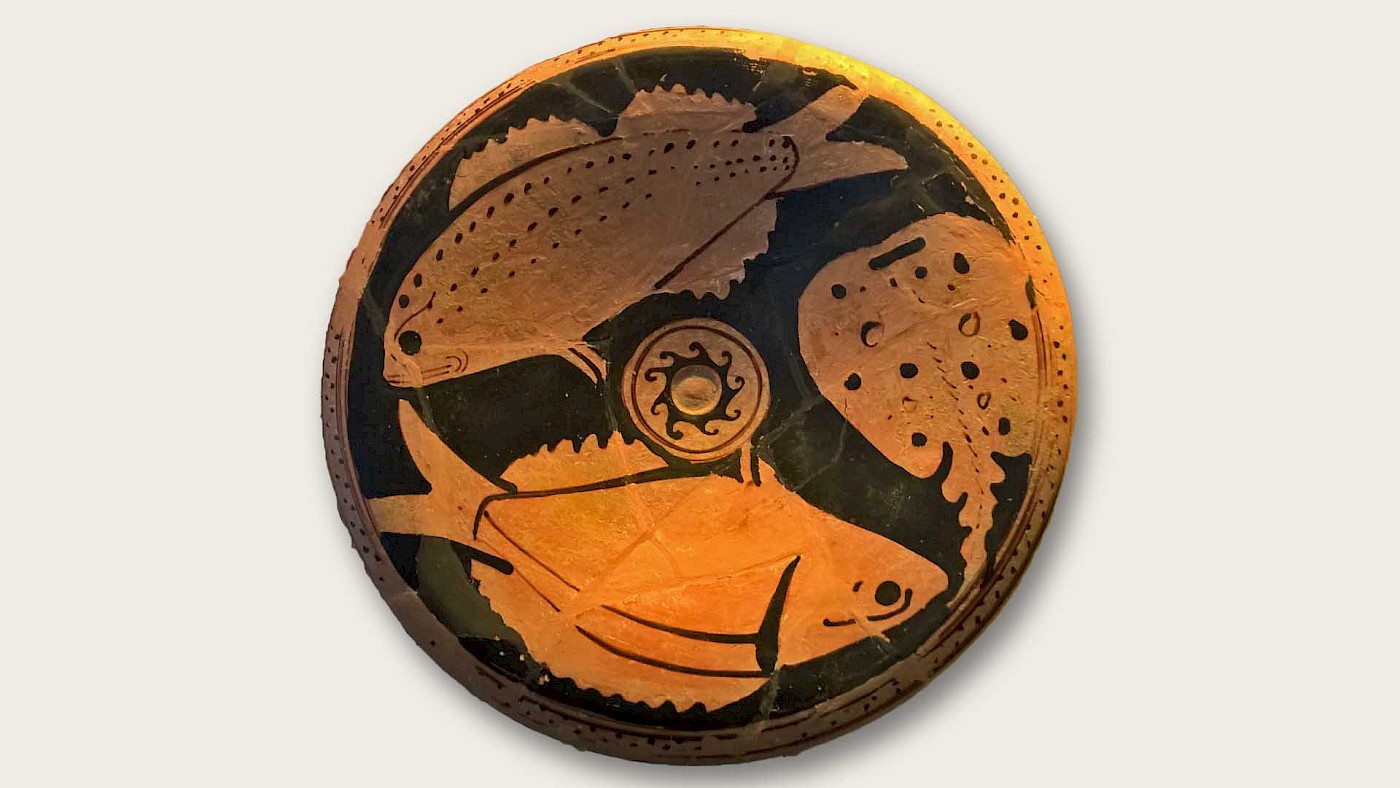The “fish plate” depicted as this article’s featured image comes from tomb 11 at Agropoli. The tomb contained the remains of two people: a man buried ca. 360–350 BC, and a woman buried a little later, around the middle of the century. The tomb contained a number of pottery vessels, as well as an iron strigil (used for scraping clean the skin).
Fish plates were originally invented in Athens in the fifth century, but most of them are found in Southern Italy and dated to the fourth century BC, where they were made locally. Attic examples are traditional red-figure, executed in just two colours (the original bright orange or red of Attic clay and the black slip), but specimens from Southern Italy sometimes include other colours, most notably white.
Fish plates derive their names, unsurprisingly, from their being decorated with various examples of seafood, including different spieces of fish (tuna, perch, puffer fish, and so forth), as well as other marine animals such as squids, octopuses, scallops, and dolphins. In Attic examples, the fish are oriented with their bellies toward the outer rim, while on the Italian examples they generally have their belly toward the depression or hollow in the middle.
The shape of the fish plate itself is what we refer to as a pinax or pinakion (“board” or “tablet”; also, “plate”). They often have a small depression or “cup” in the middle that was intended to be filled with oil or sauce. Some believe that the plates themselves were also used to serve seafood, but most of them are too small to realistically be of much practical use. As many of them are found in funerary contexts, it cannot be excluded that they were made specifically as offerings to the dead.
The latter would actually not be without precedent. The small depression or hollow in the centre of many of these fish plates might originally have contained a symbolic amount of oil or sauce. This is not without parallels: for example, lekythoi (oil flasks) made specifically for funerary purposes often were largely solid with only a small empty space that could actually contain liquid. In this way, the ancient Greeks didn’t waste much food or drink on the dead, while still symbolically providing some sustenance.
